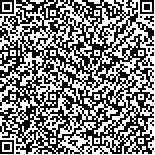| 摘要: |
| 原子吸收光谱法和等离子光谱法分别研究了潮滩盐沼植物翅碱蓬(Suaeda heteroptera)根际与非根际(根上部和根下部)沉积物中Cu、Zn、Pb和Cd的总量和化学形态。结果表明,从总量来看,不同潮滩沉积物中4种重金属次序均为Zn>Pb>Cu>Cd,但同一元素随潮滩位置变化明显,尤以中潮滩差异最显著,重金属总量明显大于其他两个潮滩(低潮滩和高潮滩),特别是根际沉积物中的重金属总量远高于非根际沉积物总量,其比值分别为Cu 3.4—4.2倍, Zn 2.2—2.7倍, Pb 3.2—3.3倍。同一潮滩均表现为根际沉积物>根上部>根下部。Cd含量相对较低,其变化不明显。从化学形态看,沉积物重金属表现为环境直接影响态(交换态和有机结合态)、环境间接影响态(碳酸盐态和铁锰氧化物态)和稳定态(残渣态)。与非根际沉积物相比,根际沉积物中重金属的化学形态发生了显著的变化,Cu和Pb以稳定态为主,其次为环境间接影响态,环境直接影响态最低;Zn与上述2种金属不同,以环境直接影响态含量最高(可交换态是有机结合态的7倍),其次分别为环境间接影响态(主要是碳酸盐结合态)和稳定态。实验结果表明, 由于特异根圈效应, 一方面该植物使可迁移形态的Cu和Pb在根际逐步得到矿化, 使其生物可利用性降低; 另一方面使Zn的生物可利用性提高, 促进了植物对Zn的吸收利用。 |
| 关键词: 重金属 翅碱蓬 根际 潮滩 化学形态 |
| DOI: |
| 分类号: |
| 基金项目:国家高新技术研究发展计划(863);“渤海典型海岸带生境修复技术项目”资助,2002AA648010号 |
|
| HEAVY METAL COMPOSITIONS IN THE SOILS OF RHIZOSPHERE AND NON-RHIZOSPHERE FOR SUAEDA HETEROPTERA |
|
ZHU Ming-He1,2, DING Yong-Sheng2, DING De-Wen3
|
|
1.Maritime College of Ningbo University, Ningbo, 315211;2.College of Environmental Science and Engineering, Dalian Maritime University, Dalian, 116026;3.Faculty of Life Science and Bioengineering, Ningbo University, Ningbo, 315211
|
| Abstract: |
| Contents and species of Cu, Zn, Pb and Cd in rhizosphere and non-rhizosphere soils of tideland halobiotic plant Suaeda heteroptera were studied in atomic absorption, spectrophotometry and plasma chromatography. Results indicated that the total contents of the four metals were in a sequence of Zn> Pb> Cu> Cd in different tidelands, but each varied remarkably depending on the location. Metal contents in the mean tideland were much higher than those in the other tide lands (the low tideland and the high tideland). Particularly, the total contents of metals in rhizosphere were much higher than those in non-rhizosphere in all tidelands. For Cu, Zn, and Pb, they were about 3.2–4.2, 2.2–2.7 and 3.2–3.3 times respectively of those in non-rhizosphere. The content of these three metals showed in the order of rhizosphere > upper root> lower root. Only 10% (0.3μg /g) variations were observed in Cd. Three chemical forms were recognized and described: direct background affected (exchangeable and organic-bounded), indirect background affected (carbonate and ferromanganese oxides) and stabilized form (residue). Distinct differences were found between the soils from rhizosphere and non-rhizosphere. Compared to those in non-rhizosphere soils, heavy metals changed their forms. Cu and Pb were mainly to stable forms, followed by indirect background affected forms, then the direct-affected ones. However, Zn behaved differently, which showed an opposite order in chemical forms, whose exchangeable forms were 7 times of organic-bound type’s, then indirect-affected and direct-affected ones. Experimental results showed that plant could effectively alter chemical forms of Cu and Pb in tideland ecological system by mineralizing them step-by-step in rhizosphere, and remedy the toxicity and reduce biological usability. Conversely, it could increase the usability of Zn, which should be handled seriously to prevent Zn from biological build-up in the tideland ecological system.
In summery, the plant can influence heavy also in turn change local marine environment by adjusting the total metal contents. These remarkable functions depended chiefly on the plant physiological actions. For further investigation, we need to study in detail the synergetic actions among bacteria, epiphyte and tide dynamics. Therefore, the plant physiological actions are important factors to be considers. |
| Key words: Heavy metal, Suaeda heteroptera, Rhzosphere, Tide land, Chemical species |
